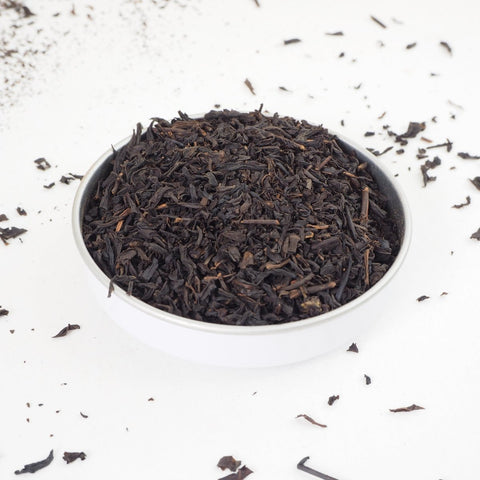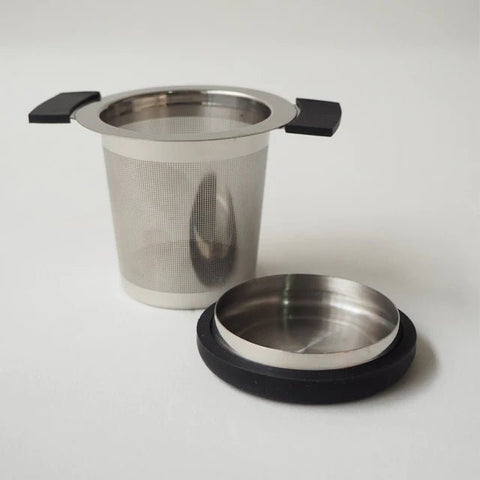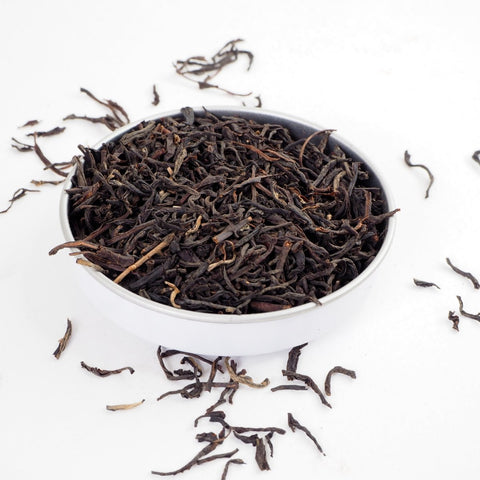Discover the Craft: How Loose Leaf Tea is Made
If you’re curious about how loose leaf tea is crafted, you're in for a treat. Every tea—from your morning black tea to the delicate white teas—begins its journey from the same humble plant: Camellia Sinensis. What makes each tea unique lies in the way the leaves are processed, transforming their flavour, aroma, and appearance.
From Bud to Brew: The Transformation of Tea
Loose leaf tea is all about celebrating the leaf in its purest form. Unlike teabag tea, which is chopped and crushed into tiny pieces to fit into bags, loose leaf tea maintains its whole-leaf integrity. This means more flavour, more nutrients, and more room for the leaves to release their true potential.
For example, white tea like Silver Needles is made from young, tender buds that are simply picked and dried gently. On the other hand, black tea undergoes full oxidation, which gives it that rich, robust flavour and deep colour we associate with a classic British cuppa.
At Teaspoon Tea Co, we offer a vibrant selection of loose leaf teas. Let’s dive into how these amazing teas are created.
The 5 Stages of Tea Processing
Making loose leaf tea is a detailed process. Every step is essential to reduce moisture, develop flavour, and prepare the leaves for your teapot. Here’s how it happens:
1. Withering: Nature Takes Its Time
In the first stage, tea leaves are spread out in long metal troughs to dry and soften. This allows water to evaporate naturally, and the leaves become flexible, preparing them for the next stage. While traditionally done by air drying in open rooms, modern factories use fans to control the process better. During this time, the leaves undergo a chemical transformation, where flavour compounds start to develop, giving tea its unique taste and aroma.
2. Rolling: Shaping the Leaves
After withering, the leaves are ready to be rolled. Rolling machines press the leaves gently, breaking their cells and encouraging faster oxidation. The rolling process not only squeezes out remaining moisture but also shapes the tea leaves. This stage is crucial for unlocking the tea’s flavour potential. In high-quality teas like Oolong, rolling is often done by hand for precision.
3. Oxidisation: The Magic Behind Black and Oolong Teas
Oxidisation is what gives black and oolong teas their bold flavours and darker colours. Once rolled, the leaves are spread out and left to oxidise naturally. How long the leaves are left to oxidise depends on the desired flavour profile. For black teas, this process is longer, resulting in that characteristic strong, malty taste. Oolong teas are only partially oxidised, giving them a more floral and complex flavour.
4. Drying: Locking in Flavour
Once oxidation is complete, the leaves are dried to stop the process and lock in the flavours. Drying methods vary, from passing the leaves through warm ovens to placing them on circular trays that slowly spin in drying chambers. Some teas, like Lapsang Souchong, are even smoked over pine wood, creating their distinct smoky aroma and taste.
5. Cleaning and Grading: A Final Touch
Once dried, the tea leaves are cleaned, removing stems, fibres, and other unwanted bits. Then, they are graded according to size and quality, with the larger whole leaves making their way into loose leaf tea packets and the smaller pieces (fannings) ending up in teabags. At Teaspoon Tea Co, we ensure only the best leaves make it into our collection.
Why Choose Loose Leaf Tea?
Loose leaf tea is a sensory experience. The larger leaves mean more room for the tea to expand and release complex flavours that teabags simply can't match. With loose leaf tea, you're not just brewing a beverage; you’re making a cup full of history, craftsmanship, and care.
At Teaspoon Tea Co, we believe that the true beauty of tea is in its simplicity and variety. Whether you’re just beginning your loose leaf tea journey or you're already a tea connoisseur, our wide range of teas—from the lightly oxidised white teas to the deeply flavourful black teas—offers something for everyone.
Experience the Difference
- So next time you brew a cup, take a moment to appreciate the journey those leaves have taken—from being hand-picked in the hills to resting in your teapot. Each sip is a connection to tradition, nature, and flavour.



